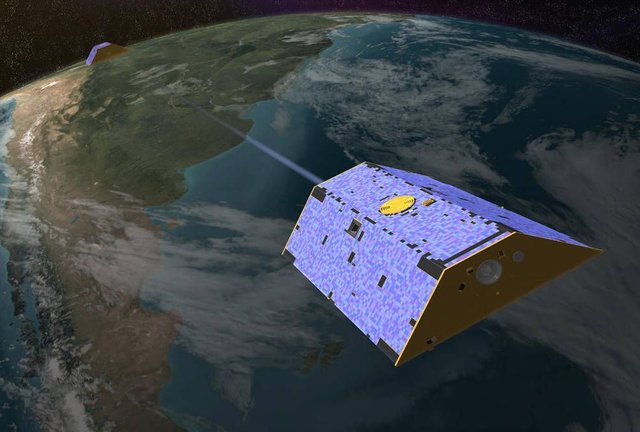NASA News

After more than 15 productive years in orbit, the U.S./German GRACE (Gravity Recovery and Climate Experiment) satellite mission has ended science operations. During their mission, the twin GRACE satellites have provided unprecedented insights into how our planet is changing by tracking the continuous movement of liquid water, ice and the solid Earth.
GRACE made science measurements by precisely measuring the distance between its twin satellites, GRACE-1 and GRACE-2, which required that both spacecraft and their instruments be fully functional. Following an age-related battery issue on GRACE-2 in September, it became apparent by mid-October that GRACE-2’s remaining battery capacity would not be sufficient to operate its science instruments and telemetry transmitter. Consequently, the decision was made to decommission the GRACE-2 satellite and end GRACE’s science mission.
GRACE, a mission led by Principal Investigator Byron Tapley at the University of Texas at Austin, launched in March 2002 on a planned five-year mission to precisely map our planet’s ever-changing gravity field. It has revealed how water, ice and solid Earth mass move on or near Earth’s surface due to Earth’s changing seasons, weather and climate processes, earthquakes and even human activities, such as from the depletion of large aquifers. It did this by sensing minute changes in the gravitational pull caused by local changes in Earth's mass, which are due mostly to changes in how water is constantly being redistributed around our planet.
“GRACE has provided paradigm-shifting insights into the interactions of our planet’s ocean, atmosphere and solid Earth components,” said Tapley. “It has advanced our understanding of the contribution of polar ice melt to global sea level rise and the amount of atmospheric heat absorbed by the ocean. Recent applications include monitoring and managing global water resources used for consumption, agriculture and industry; and assessing flood and earthquake hazards.”
For more information on GRACE, visit: